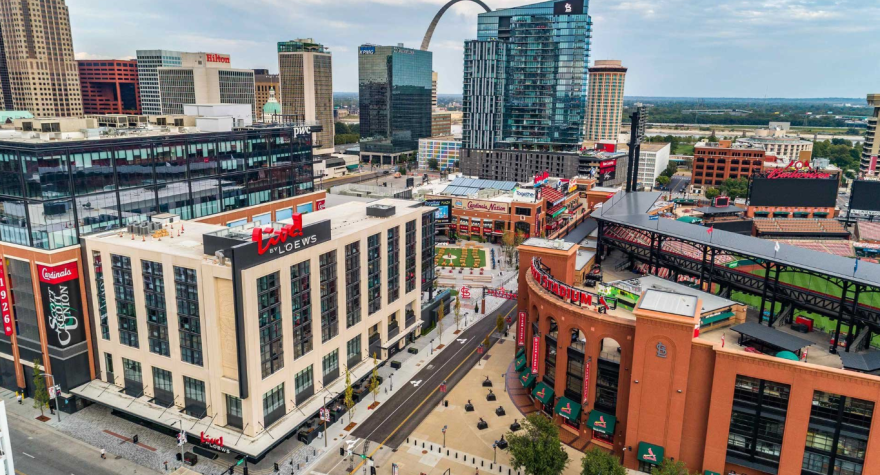The new owners of the Tampa Bay Rays discussed various topics during their introductory news conference Tuesday, and primarily the need for a new stadium to replace Tropicana Field.
While it offered few details, Rays CEO Ken Babby made one thing clear.
"We'll come forward doing our part, but we need the partnership of the community to be able to make this work, and that ultimately will be a public-private partnership that's going to add jobs, deliver value, we think find really unique ways of being able to make Tampa Bay a better place to work, live and play, and create something frankly that isn't here today," Babby said.
The Rays envision a fixed-roof, domed stadium as the anchor for mixed-use development that would include hotels, retail, restaurants and bars. And perhaps, even a college.
ALSO READ: New Rays owners offer criteria for Tampa-area stadium search, with a plan to open by 2029
Babby talked about the Atlanta Braves' recently built home, Truist Park, as the Rays' model. Located in unincorporated Cobb County about 20 miles northwest of downtown Atlanta, it's part of multi-use development called The Battery.
It features corporate partners that have moved into office buildings controlled by Atlanta Braves Holdings Inc., the team's owner and a publicly traded company that also co-owns a massive Omni hotel complex next to Truist Park.
The Braves' website describes The Battery as "the South’s preeminent lifestyle destination" and "a sports and entertainment experience unlike any other."
The Rays' new owners want a minimum of 100 acres, which would include retail shops, bars and restaurants alongside a new ballpark. They said the revenue stream from the surrounding development is needed to pay for the stadium, which would likely cost more than $1 billion.
Rays managing partner Patrick Zalupski also envisions stadium revenue beyond baseball, with another 150 to 180 events per year, including concerts, festivals, and other major gatherings.
It runs on The Battery
The Battery project leveraged tax increment financing, a way of raising funds by capturing property taxes from nearby businesses, through a community improvement district to finance redevelopment.
Tax increment financing is a common practice in Florida. That's where property taxes are frozen in the neighboring area, and after the ballpark is built, anything over that amount is plowed back into public improvements in that area.
Tampa has eight such districts. They were first used to create downtown development authorities, to redevelop urban cores.

To finance Truist Park, Cobb County, the Cumberland Community Improvement District, and transportation taxes contributed $421 million, mostly through county-issued bonds. The Braves committed $181 million over 30 years to help repay the bonds, reducing the county’s financial risk and helping secure lower interest rates.
In addition, the Braves contributed another $372 million directly toward stadium construction.
Braves Holdings privately funded the remainder of The Battery, approximately $452 million, with the expectation of generating revenue from stadium and baseball operations, rents from office, retail, and entertainment spaces, hotel and residential income, and parking fees.
At first glance, the Braves' project might sound a lot like the public-private $6.8 billion Historic Gas Plant Project that was to include a $1.3 billion Rays stadium. The Rays' previous ownership ended an agreement with city of St. Petersburg and Pinellas County this year to proceed with the 86-acre proposal.
That plan involved more risk for taxpayers and involved outside management by Hines, a developer that partnered with the Rays. That complexity and uncertainty about revenue projection likely contributed to the team pulling out.
Tax breaks in St. Louis
Major League Baseball teams offer other ideas on how public dollars can be used to finance increasingly expensive ballparks.
The St. Louis Cardinals received $65 million in tax breaks from the city of St. Louis to help build the first two phases of a mixed-use downtown development at Busch Stadium called Ballpark Village.
ALSO READ: Here are 5 key questions the new Rays owners addressed for fans
It includes over 300,000 square feet of retail, dining, and entertainment, plus office and residential space over seven blocks. It's billed as a "year-round destination" that includes a Cardinals Hall of Fame, apartments, a hotel, and office towers.
Or a partnership could be as simple as donating public land, which is being talked about with Hillsborough College's campus on Dale Mabry Highway as a possible stadium site.
That's across the street from Raymond James Stadium, which reflected the limits of public-private partnerships. It was built in 1998 with public funds as part of the Community Investment Tax. The sales tax proposal created so much opposition that it had to be sweetened with money for schools and roads before barely passing.
WUSF's Rick Mayer contributed to this report.




